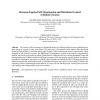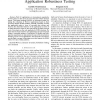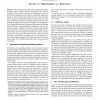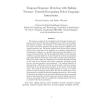185 search results - page 31 / 37 » Refining the Execution of Abstract Actions with Learned Acti... |
AROBOTS
2004
13 years 7 months ago
2004
The control of robot swarming in a distributed manner is a difficult problem because global behaviors must emerge as a result of many local actions. This paper uses a bio-inspired ...
IJFCS
2006
13 years 7 months ago
2006
The outcome of verifying software is often a `counterexample', i.e., a listing of the actions and states of a behavior not satisfying the specification. In order to understan...
ISSRE
2010
IEEE
13 years 5 months ago
2010
IEEE
—Web 2.0 applications are increasing in popularity. However, they are also prone to errors because of their dynamic nature. This paper presents DoDOM, an automated system for tes...
ECAI
2010
Springer
13 years 8 months ago
2010
Springer
Abstract. Human users trying to plan and accomplish informationdependent goals in highly dynamic environments with prevalent uncertainty must consult various types of information s...
CONNECTION
2006
13 years 7 months ago
2006
We present an approach for recognition and clustering of spatio temporal patterns based on networks of spiking neurons with active dendrites and dynamic synapses. We introduce a n...




